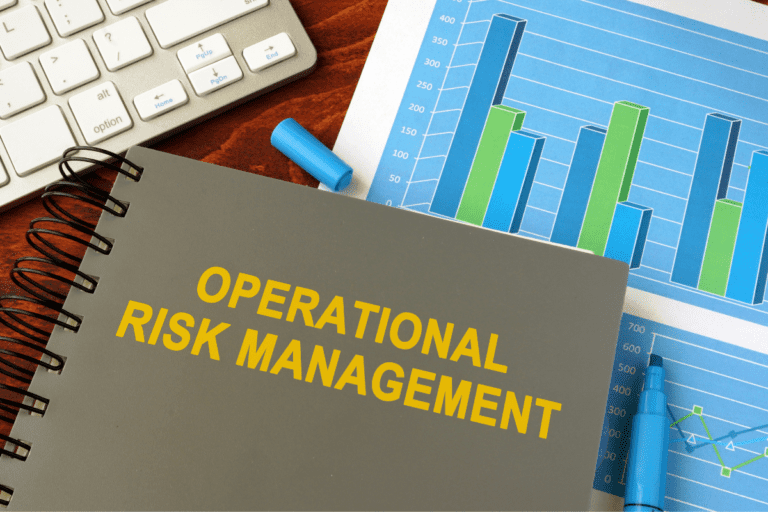Compliance risk management is a critical aspect of modern-day businesses. It encompasses a wide range of regulations and standards that organisations must adhere to operate legally and ethically.
With an ever-growing number of regulations and standards being introduced, it can be challenging for organisations to keep pace with the constantly evolving compliance landscape.
In this article, we will explore key risk challenges in navigating the complex landscape of regulations and standards and provide practical advice on effectively managing compliance risks.
Definition of Compliance Risk Management
Compliance Risk Management is vital for organisations to ensure compliance with applicable regulations and maintain a healthy business environment.
Compliance Risk Management manages, controls and mitigates the risks associated with regulatory requirements, industry standards, and corporate policies. It includes implementing processes, policies, and procedures to ensure organisations adhere to applicable laws, regulations, and standards.
It also helps organisations develop strategies to minimise the risk of non-compliance.
Purpose and Importance of Compliance Risk Management
Organisations expanding into new markets and adopting new technologies are increasingly exposed to compliance risks. From financial regulations to data privacy laws, the complexity of compliance risk management is only growing.
Importance of Staying Ahead of Compliance Changes
The landscape of compliance risk management is constantly evolving, with new regulations and standards being introduced regularly. This presents a significant challenge for organisations. They must continually adapt to new requirements and maintain current processes and systems. In addition, organisations must also be able to respond quickly to changes in regulations and standards, which can often happen without much notice.
Another challenge is the increasing complexity of regulations and standards. With the rise of cross-border transactions and digital technologies, organisations must navigate a complex web of regulations and standards to operate legally and ethically. This requires a deep understanding of the regulations and standards that apply to their specific industry and geographic location and a comprehensive approach to compliance risk management.
The Importance of a Comprehensive Approach to Compliance Risk Management

A comprehensive approach to compliance risk management is essential for organisations to navigate the complex landscape of regulations and standards effectively. This approach should encompass several key elements, including:
- Identification of compliance risks: Organisations must identify their compliance risks, considering the specific regulations and standards that apply to their industry and geographic location
- Development of compliance policies and procedures: Organisations must develop policies and procedures designed to mitigate compliance risks and ensure that they follow relevant regulations and standards
- Monitoring and reporting: Organisations must continuously monitor their processes and systems to ensure that they are following relevant regulations and standards and must report any incidents of non-compliance promptly
- Training and education: Organisations must train and educate their employees on the importance of compliance and how to comply with relevant regulations and standards
- Regular assessments: Organisations must regularly assess their compliance risks and the effectiveness of their policies and procedures, making changes as necessary to ensure that they are always in compliance

Managing Compliance Risks in Practice
Managing compliance risks in practice requires a multidisciplinary approach involving all organisation departments. This may include having a chief compliance officer, the legal department ensuring the flow of legal information, and the organisation following relevant regulations and standards. The finance, information technology, and human resources departments are responsible for implementing the necessary policies and procedures.
To effectively manage compliance efforts and risks, organisations must also have the right compliance programme, tools and systems in place. This includes an Enterprise Risk Management (ERM) framework, which can help organisations identify and assess compliance risks and track their progress in addressing them. Other valuable tools include:
- Data analytics software, which can help organisations monitor their processes and systems for compliance
- Training and education software, which can help organisations provide the necessary training and education to their employees
Conclusion
The landscape of compliance risk management is constantly evolving, presenting a significant challenge for organisations.
However, organisations can effectively navigate the complex landscape of regulations and standards by adopting a comprehensive approach to compliance risk management and having the right tools and systems in place.
By continuously identifying and mitigating compliance risks, developing, and implementing effective policies and procedures, monitoring and reporting on compliance, providing training and education to employees, and regularly assessing their compliance risks, organisations can ensure that they remain in compliance with relevant regulations and standards and minimise the risk of non-compliance.
FAQs

What Is Compliance Risk Management?
Compliance Risk Management involves identifying, assessing, controlling, and monitoring the risks associated with non-compliance with laws, regulations, policies, and procedures.
Why Is Compliance Risk Management Important?
It is an integral part of a company’s risk management strategy. It can help ensure the company adheres to all applicable laws and regulations.
What Are Key Regulations and Standards?
Key regulations and standards are legal frameworks and requirements set by governments, regulatory bodies, and industry associations. They ensure that products and services meet specific quality and safety standards and that companies and organisations comply with laws and regulations.
What Is the Compliance Risk Management Process?
The process includes identifying potential areas of non-compliance, assessing the risks associated with those areas, and implementing procedures and controls to mitigate those risks. Compliance Risk Management also includes monitoring the systems and controls to ensure they are effective and efficient.
How Do I Stay Ahead of Compliance Changes?
Actions include:
- Read up on the latest compliance regulations and changes – staying aware of current regulations is essential
- Join relevant professional organisations – these organisations can provide updates on changes to laws and regulations
- Attend conferences and seminars – these events are often a great way to stay current on compliance changes
- Develop relationships with industry experts – having a network of professionals to consult with can provide valuable insight
- Utilise resources such as blogs and podcasts – these can be a great way to learn more about regulations and their changes
- Consult a regulatory lawyer – having a lawyer on hand can ensure that you comply with all laws and regulations
- Set up alerts and notifications – many regulatory agencies provide email alerts to inform you of any changes
- Review and update policies and procedures – ensuring that policies and practices are up to date can help avoid compliance issues
- Educate staff on changes – having employees aware of any changes to regulations is essential.
- Conduct regular training and audits – regular training and audits can help ensure that the organisation is compliant and current with regulations.
What Are the Benefits of Effective Compliance Risk Management?
Benefits include:
- Improved reputation: Effective compliance risk management helps organisations build a positive reputation and trust among their stakeholders, including customers, partners and regulators
- Reduced financial risk: Compliance risk management helps to identify potential risks, including financial crime, and reduce potential financial losses
- Minimising legal exposure: Compliance risk management helps ensure that organisations meet relevant regulations and legal requirements
- Improved operational efficiency: By having effective compliance risk management, organisations can ensure the most efficient processes and procedures are in place
- Streamlined operations: Compliance risk management helps organisations to streamline their processes, to improve efficiency and reduce costs
- Increased customer confidence: Compliance risk management helps organisations demonstrate that they take customer data and information security seriously
- Improved staff morale: Compliance risk management helps to ensure that staff are aware of their roles and responsibilities and understand the importance of following the correct procedures
- Improved decision making: Compliance risk management helps organisations to make informed decisions based on the knowledge of potential risks
- Reduced audit costs: Compliance risk management helps organisations reduce the costs associated with external and internal audits and investigation
- Improved data quality: Compliance risk management helps to ensure that data is accurate






